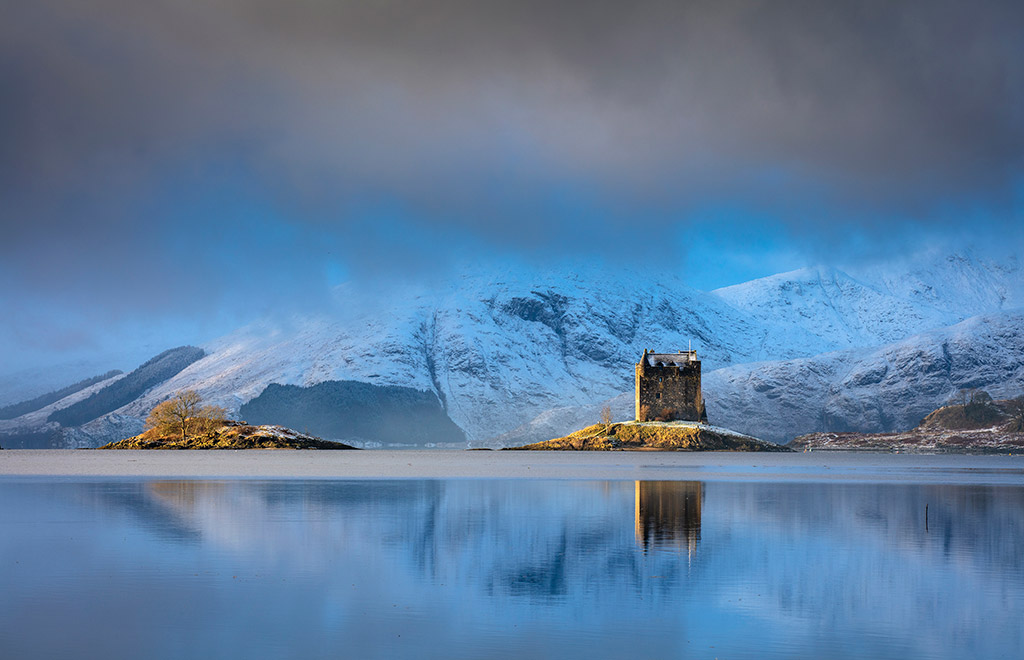[ad_1]
Developing an instinct for when the light will be good is one of the secrets of creating dramatic landscape images, Landscape Photographer of the Year 2022 winner Will Davies tells Damien Demolder
It might be considered by some to be a poor show of manners to win the top prize in the Take A View Landscape Photographer of the Year competition on the first time of entering. But perhaps Will Davies’ move to the USA has made him forget about gentlemanly sportsmanship and fine traditions. His only saving grace perhaps is that the winning image shows God’s own South Wales in glorious sunlight and describes the gently undulating countryside spread out before him from Pen y Crug with great show of patriotic adulation. Beating thousands of more seasoned landscapers to the top spot, Will’s photograph carries a number of hallmarks of his developing style and shows us both the way he works and the elements that catch his eye.
Getting into photography
Although Will grew up in Wales in his teenage years he was more interested in golf, pubs and rugby than in the spectacular landscape that surrounded him. It was a move to East Africa with the international development organisation he worked for that opened his eyes to the natural world, and to photography.
‘I live in Washington DC at the moment,’ Will tells us, ‘where the immediate landscape and wildlife opportunities are a little limited, but when I was 27 I moved to Ethiopia. It was about 2007 and a couple of years after digital SLRs had become a bit more mainstream. I wanted a camera to take on trips, so got myself a Canon Rebel XT (EOS 350D in the UK). I’d moved there on my own, so I had plenty of time at weekends to do what I wanted – and I wanted to travel around to see the country.
I also wanted to be able to capture pictures of the people, the landscape and the wildlife to share with people at home. It’s pretty easy to take good pictures in Ethiopia as the high-altitude scenery is stunning, and once I started to get a few decent pictures of it I really got the photography bug. From there I moved to Kenya, which is where things really took off for me and wildlife photography. When you can drive to the Maasai Mara at the weekend it’s hard not to get a little bit obsessed with photography.

Acacia tree silhouette against a dramatic sunrise – Masai Mara, Kenya. Image credit: Will Davies
‘I’d had a film camera as a child but I wasn’t very interested. The instant feedback you get with a digital camera though made a lot of difference to me. I could see what I’d just shot and would occasionally say ‘Wow – that’s pretty good!’ I could see when I made mistakes and immediately see what was wrong, which gave me the chance to correct things and to learn a lot more quickly. It was the first time I was taking pictures that got me excited and which I felt I could share with other people. It helped that the standard of postcard and travel photography in Ethiopia at the time wasn’t very good at all, so it gave me a lot of confidence in what I was creating.
At the time there wasn’t much tourism in the country, and most people associated the country with poverty, but the scenery and the history was, and is, amazing. There are churches from the 12th century carved out of the rocks that are beautifully conserved and it’s a really fascinating place to travel. There are gelada baboons in the Simien Mountains too, that sit on the edge of 2000-metre-high cliffs and which are almost tame. They just sit there and let you photograph them – so it’s very easy. I visited them a few times and was gradually getting into wildlife photography before I moved to Kenya and before I started buying half decent camera gear.’
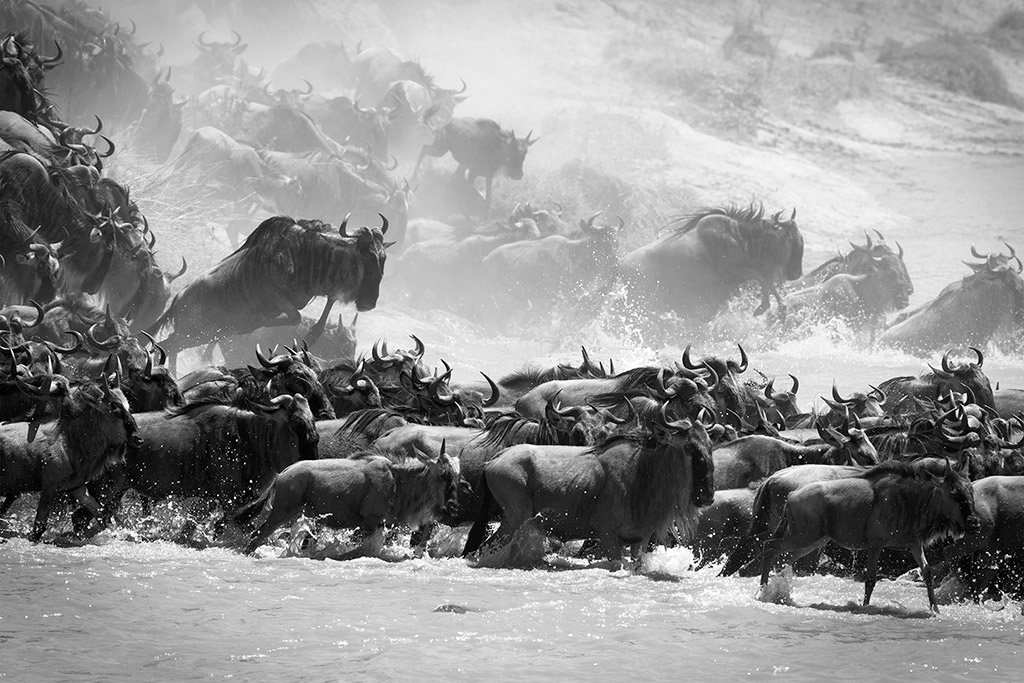
Wildebeest cross the Mara river during the great migration, Kenya. Image credit: Will Davies
First time lucky
‘I hadn’t entered Landscape Photographer of the Year before, not because I didn’t want to or didn’t know about it,. But because I didn’t have anything I thought was worth putting in. Most of my pictures were taken in Africa and I only had a few snaps taken in Pembrokeshire from holidays. During The Pandemic I spent a lot of time back in the UK and had the chance to photograph the countryside around where I come from.
I would walk in the hills and take the camera, and when we could travel I went to Scotland and to North Wales to take pictures too. I got a decent number of good pictures together, and thought I had enough to make it worth a shot at the competition. I wouldn’t have entered unless I thought I had a chance obviously, but really I was just hoping to get into the book. I really didn’t expect it was possible for me to win. There are a lot of really good UK landscape photographers and the standard is always very high.

Landscape photographer of the year overall 2022 winner. William Davies – Brecon In Winter. Location: Brecon Beacons National Park, Wales Canon EOS 5DSR, EF 70-200mm f/4L
‘Winning gave me a big confidence boost, and has motivated me to shoot a lot more than I did in the past. It has also put me in touch with other photographers, and got me the attention of magazines and websites. So it’s been great that way too. I’ve had to make my own website and join Instagram so that people can find me. It would be easy to feel a lot of pressure to do well next time too, and to keep up the success, but I try to put that to the back of my mind. Fundamentally I do this for the joy of it and my love of being outside.
‘Even though I grew up in South Wales there were a lot of places I didn’t know so spending time there with my camera during lock-down has really opened it up. I used to just go off to explore and to see what I’d come across without doing any research at all. I knew some places that would have photographic potential and head in that direction, but I came to realise it was a pretty inefficient method of finding locations.
Going in blind of course meant that I wasn’t copying anyone else and I wasn’t going to be influenced by other pictures I’d seen, but it really does pay to do some research. The first guide book I bought was Drew Buckley’s Explore and Discover South Wales, which showed me so many places I just didn’t know about – even though it was my part of the country. If I’m going anywhere now I get a guidebook to find out where the best locations are, if only just to get me started.’
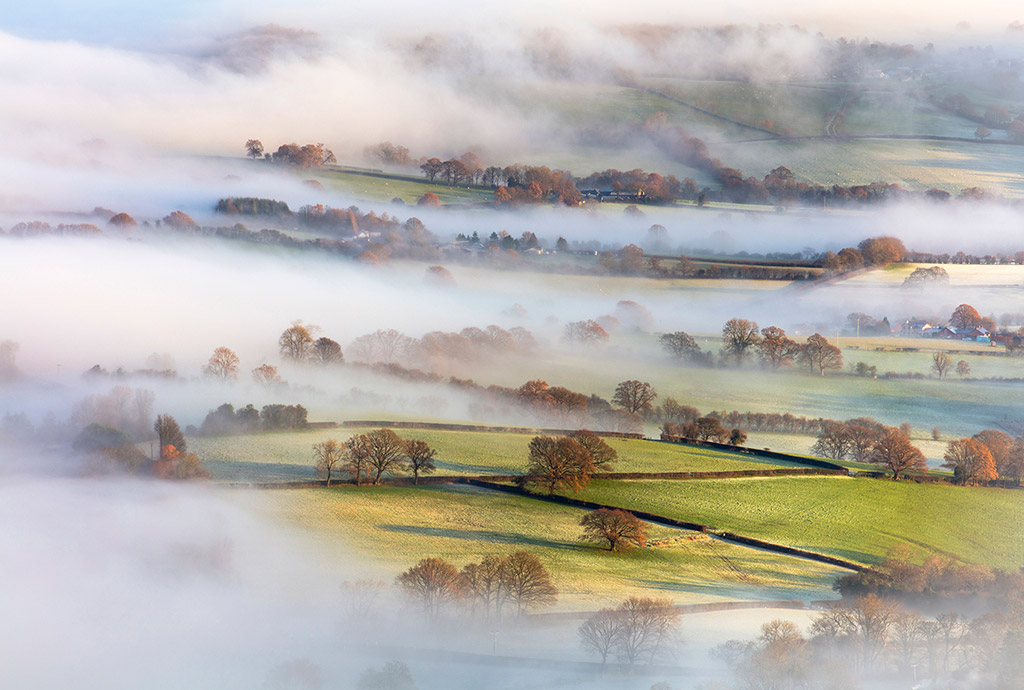
Fields in the mist – Monmouthshire, Wales. Image credit: Will Davies
Instinct for the moment
‘The excitement comes before you get the camera out, doesn’t it?’ Will points out. ‘There are certain days when you just have that feeling as you’re driving to wherever you’re going or walking, and you know the conditions are going to be exciting. I mean it could be that you’re out in autumn, the colors are beautiful and it’s one of those mornings where the mist is just sitting amongst the trees – there’s going to be an opportunity. You know when the sun rises you’ll get a stunning and misty landscape. Or it could be that it’s just snowed and you can see the clouds are clearing and you have a feeling that at sunrise there’s going to be some magical light. You start to develop a bit of an instinct for when it’s going to be good.
‘For me it’s all about the light. A lot of photographers say they’re ‘chasing the light’ and I think for me that’s also true. In those moments on a cloudy day when the light just breaks through and hits a part of the landscape and brings it to life. It can create huge contrasts between the the sunlit parts of the scene and a background that’s maybe full of storm clouds. It’s the same when you get that first light hitting the mist as it’s just lifting off the trees in the morning. Those are good days, and sometimes there are so many great photos to be had it’s almost stressful deciding which to shoot. It can be hard to relax and focus instead of running around trying to get all the angles, views and opportunities.
I take a lot of photos – that’s kind of my approach. I don’t usually go out to shoot a particular scene or a very specific composition. I may have certain shots in mind but I try to adapt according to how the light is hitting the landscape.’
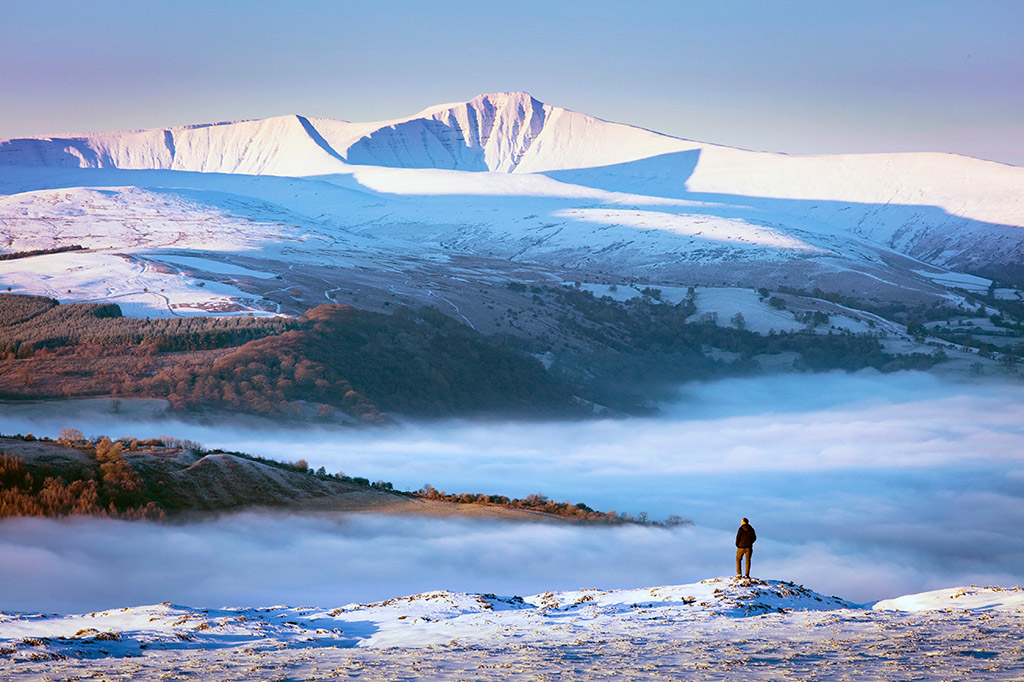
A magical winter’s morning in the Brecon Beacons, Wales. Image credit: Will Davies
Light and lenses
Will says he likes to simplify the scenes in front of him to make them compelling, but without losing the drama that often comes with the complexity of the natural landscape. Part of his method for doing this involves using a telephoto lens to isolate distant areas, such as in his winning shot of Brecon Beacons in Winter. ‘Using a telephoto lens makes it much easier to limit what’s in the frame, and to help the viewer focus on what you want them to see. It also gives the scene a bit of compression between the foreground and the background that can help to bring the drama out.
It’s hard to shoot with a wide angle lens in the Brecon Beacons. Compared to Essex it’s mountainous, but it isn’t the Dolomites or Iceland. It’s rolling hills by those standards, so with a wide lens it can look a bit flat while a long lens in good conditions can bring out a sense of drama.
‘At the coast it’s a different story though, and I almost always want to shoot with a wideangle, as there are usually interesting foreground details and cliffs in the background. You need a wide just to get everything in the frame. With a wide angle the importance of the foreground becomes more pronounced so you have to make sure there is something in the foreground to see or that it fits into the wider landscape itself.
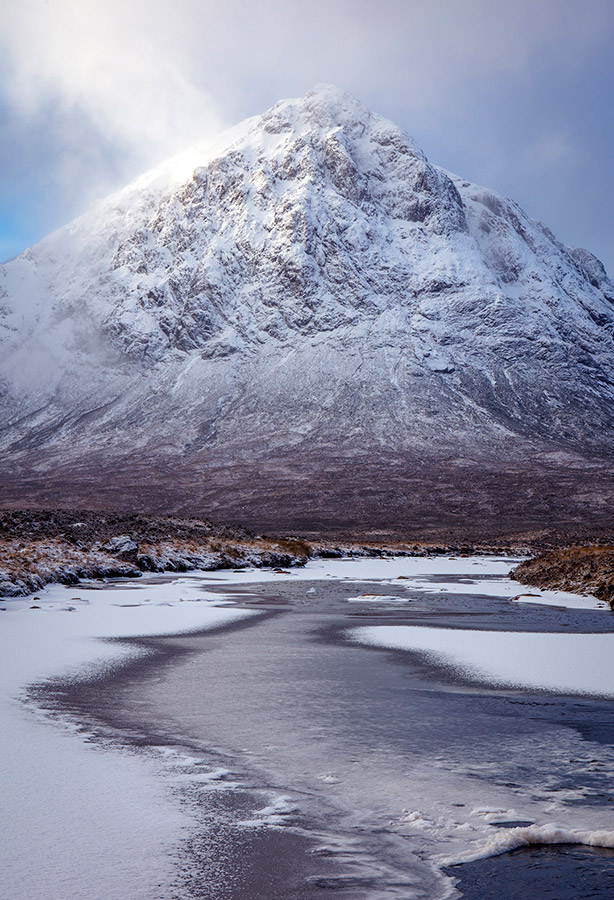
Buachaille Etive Mor – Glencoe, Scotland. Image credit: Will Davies
‘I like the contrast between light and shadow in the landscape, but I really like it when the light is on the foreground and the background is darker and moodier. I like that look as it’s the opposite of what we usually see – where the foreground appears a bit too dark as it’s against a bright sky. Shaded mountains with a bright foreground is always something I’m on the look-out for as it feels like nature is flipped, and you have this lovely light drawing you into the image.
‘I think one thing I’ve learned is to know when I’m going to get the right conditions at different times of day and in different situations. If you’re in the Brecon Beacons there’s much less point going out before sunrise or after the sunset because you really need that sunlight – you need something to create that drama. If you’re on the coast though it’s quite hard to take good photos when there is direct sunlight. It’s those kind of pre-dawn or twilight moments when you get the reflections and the colours in the sky. That I’ve learned from trial and error. I need to be aware of how different types of conditions will fit different scenes in different ways.’
See our guide to outdoor light in photography here.
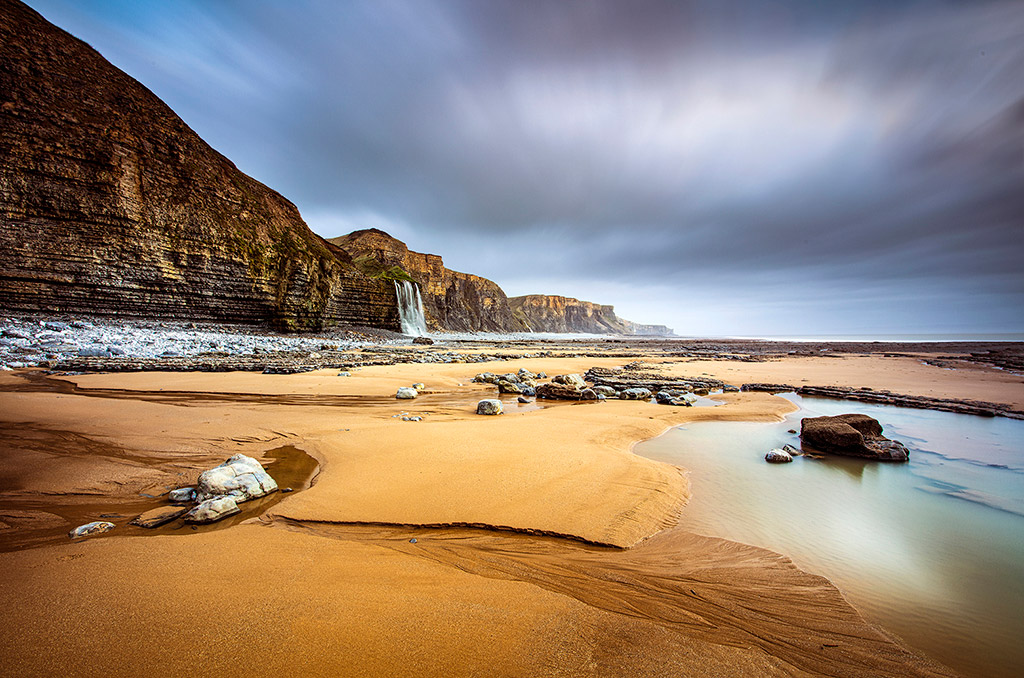
Long exposure of rocky coastline and waterfall near Southerndown, Wales. Image credit: Will Davies
Will Davies – Camera kit
‘I don’t shoot much wildlife these days, so most of my kit is aimed at landscape work. I use a Canon EOS 5DR which I got because it was the highest-resolution full frame Canon camera at the time. I have three zoom lenses to cover 17mm to 200mm, though I do still have my Sigma 300mm which cost more than my other three lenses together.
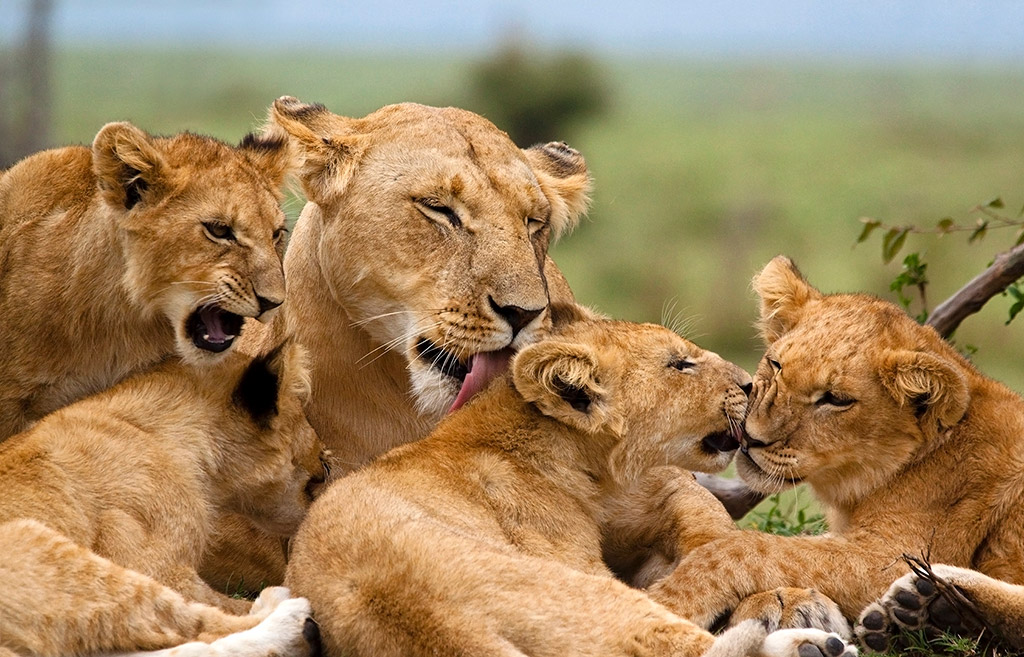
A mother and lion cubs, members of the marsh pride in the Masai Mara (of BBC Big Cat Diaries fame). Image credit: Will Davies
‘I discovered in Iceland recently that I need a better tripod that can hold the camera still in the wind and that doesn’t just slide along on the ice – so that’s my next upgrade.
‘For my landscapes I tend to use f/16 all the time. I don’t really see any reason not to have focus throughout the whole image. I’m not into selective focusing, so I pick my focus point and stop down. I rarely shoot any other way. Of course for wildlife the opposite was true. I’d use a wide aperture to get a shallow depth-of-field, but I like my landscapes to be sharp front-to-back.’

The Eystrahorn mountain, Iceland. Image credit: Will Davies
See the best cameras for Landscape Photography here.
To see more of Will’s work visit his website and Instagram.
This year’s Landscape Photographer of the Year is now open for entries until 31st May 2023. Submit your photos here.
See more of the best competitions to enter here.
Featured image: Castle Stalker, Scotland. Will Davies
Need further landscape photography guidance? Check out our landscape technique guides here, including our complete guide to Landscape Photography.
You can also improve your landscape photography by joining us on one of our upcoming photography trips. Tours include Faroe Islands with Serkan Günes, 22 – 27 August 2023. See all photography tours and vacations in partnership with Zoom Photo Tours.here.
How to capture moody monochrome landscapes
Top tips for award-winning landscapes from LPOTY 2021 winners
Transform your landscapes with square format
The top 20 best landscape photographs
The best landscape photography books for inspiration
Follow AP on Facebook, Twitter, Instagram, and YouTube.
[ad_2]
